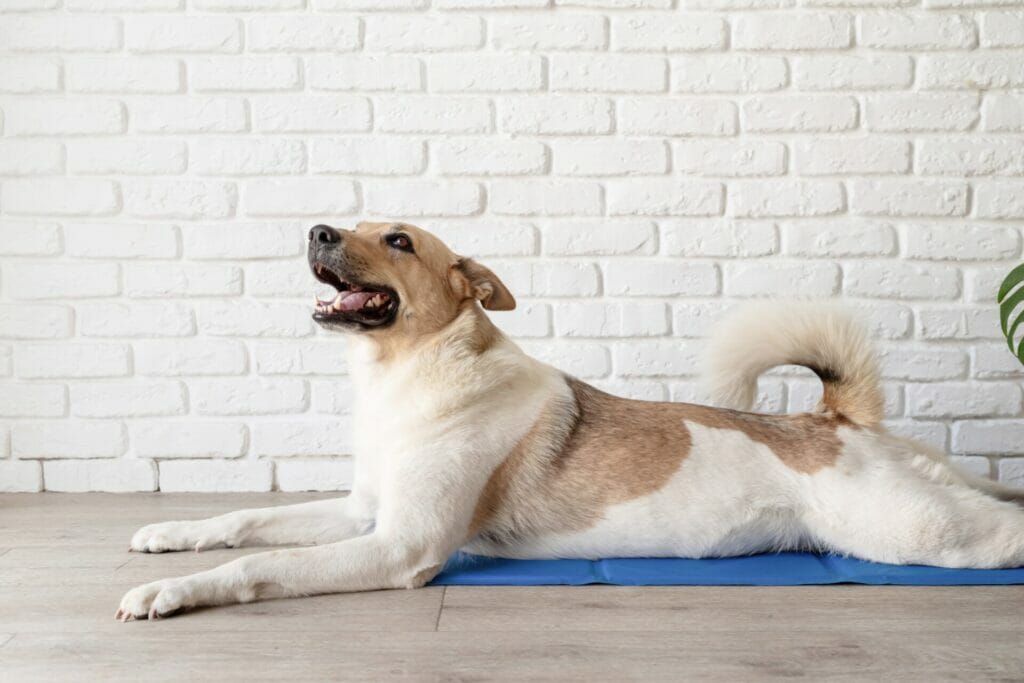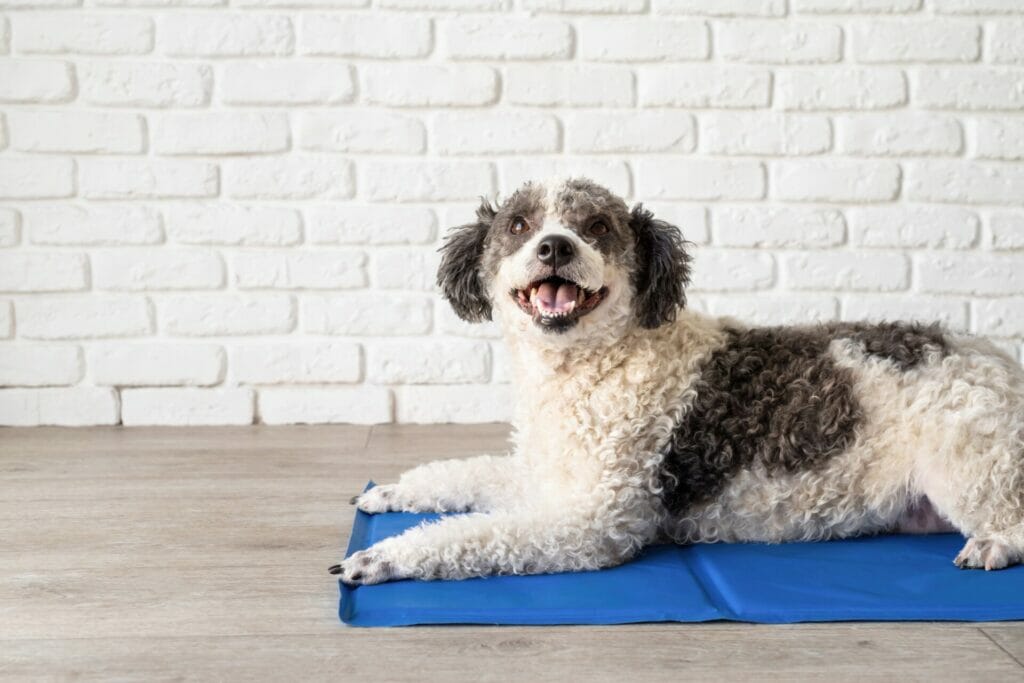Mat training can be a helpful way to avoid tripping over your dog and communicate to your dog where you would like them to be. Mat training is a versatile skill that can also help you support your dog with handling stressful experiences in the home. This skill can even help reduce anxiety and make bringing your dog to different places like restaurants easier.
What is mat training?
At its most basic level, mat training teaches your dog to go to a specific location, like a towel or dog bed, when you give a verbal cue. Advanced mat training involves your dog not just going to a mat when cued but also settling into a relaxed position on the mat and staying there until you give a cue to release them. Mat training allows you to easily move your dog to a different location if you’re cooking in the kitchen or needing to answer the door when a package gets delivered.
Why mat train your dog
Mat training is a highly versatile and beneficial skill. With mat training, your dog learns to go to a designated place when verbally cued and wait in a sit or down position on that mat until released. Mat training is helpful as it lets you communicate with your dog where you would like them to be and prevents your dog from being underfoot. Mat training can reduce conflict between you and your dog in the home or between multiple dogs if each dog has been mat trained. Mat training can reduce your dog’s stress by helping to create clear expectations for what you want them to do. Matt training is also useful if you will be traveling with your dog or bringing your dog to work with you.

How to Start Mat Training:
Step 1 Pick a mat- When you start mat training, it’s important to select what you want to use as a mat for your dog. You can use a dog bed, a towel, a yoga mat, or a bathmat, whatever you prefer. Select a mat that won’t slide as your dog gets onto it, as some dogs find that stressful.
Step 2 Introduce the mat- Put the bed or mat down and let your dog explore it. The goal is to ensure your dog is comfortable with the mat and not worried or stressed about it. Praise your dog for any engagement with the mat and give them lots of treats, especially for getting onto it.
Step 3 Teaching “go to mat” – In a quiet area of your home with minimal distractions, use treats to get your dog’s attention, then use an excited voice to encourage your dog to follow the treat to the mat. Once you have lured your dog to the mat, praise and treat your dog while they are on the mat.
Step 4 Mat and go – Once your dog has their treat on the mat, praise and release your dog to get off the mat with a release cue of choice like “break” or “free.” to encourage your dog to leave the mat you can toss a small treat as you use your release cue. Teaching a release cue along with mat training is important so your dog learns when you want them to get off their mat at the same time as they learn when you want them to go to the mat.
Step 5 Adding distance – Continue to lure your dog to their mat, and after several repetitions, you can introduce your verbal cue of choice to go to the mat, such as “place” or “mat,” as your dog is moving towards the mat. Then praise and treat your dog when they get to the mat. Quickly your dog will make the association that your verbal cue means to go to the mat, and you can start just saying the cue and then rewarding your dog when they get to the mat instead of having to lure your dog.
Step 6 Add Duration – Once your dog readily moves to the mat on cue, it’s time to start building duration. You want to start asking your dog to stay on their mat very slowly, at first just a few seconds at a time. The goal isn’t to see how long your dog can stay on the mat, rather we want to keep training sessions fun and successful for our dog and build up their duration slowly. If your dog gets off the mat before you release them, just guide them back to the mat with your verbal cue, and then once they are settled again, you can use your release word. As you add duration to how long you ask your dog to stay on their mat, continue to praise your dog, and go in and treat your dog while they stay on their mat to keep being on the mat as a highly rewarding place for your dog.
Step 7 Add Distractions – Once your dog is a pro at going to their mat on cue in a quiet area of your house, it’s time to start adding some distractions. Practice this skill in a busier area of the house or bring your mat outside and practice in your front yard or on a quiet sidewalk area. Add distractions slowly to keep your dog successful and not overwhelmed. If your dog doesn’t follow your cue to go to their mat, chances are the level of distraction is too high. To help your dog be successful, lower your criteria by moving the mat to a less distracting area before asking your dog to go to the mat, then praising and rewarding.
Benefits of Mat Training:
Not only does mat training allow you to send your dog to an out-of-the-way location, but mat training can also have positive behavioral and emotional impacts for them. Because dogs learn that going to their mat is a good place to be, dogs develop positive associations with being on their mat. This can help to shift your dog’s emotional response to stressors, cope with stress, and to help them remain calm in new places like vet clinics, outdoor cafes, or if your dog joins you at work. You can also use mat training with your dog as an alternative behavior to behaviors you might not like, such as barking and running to the door when the doorbell rings. Teaching your dog to run quietly to their mat instead can eliminate this common behavioral challenge in your home.
Increasing Confidence:
Because mat training can decrease confusion about what you want your dog to do, this can help your dog to be more confident, which can translate into an increase in calm behavior. Dogs thrive on consistency. Dogs who are more confident and secure can better regulate their emotions. This can help prevent your dog from becoming stressed and over-aroused by environmental changes. Use mat training to provide consistency and clarity for your dog in daily life around the house and when you travel to new places.




















